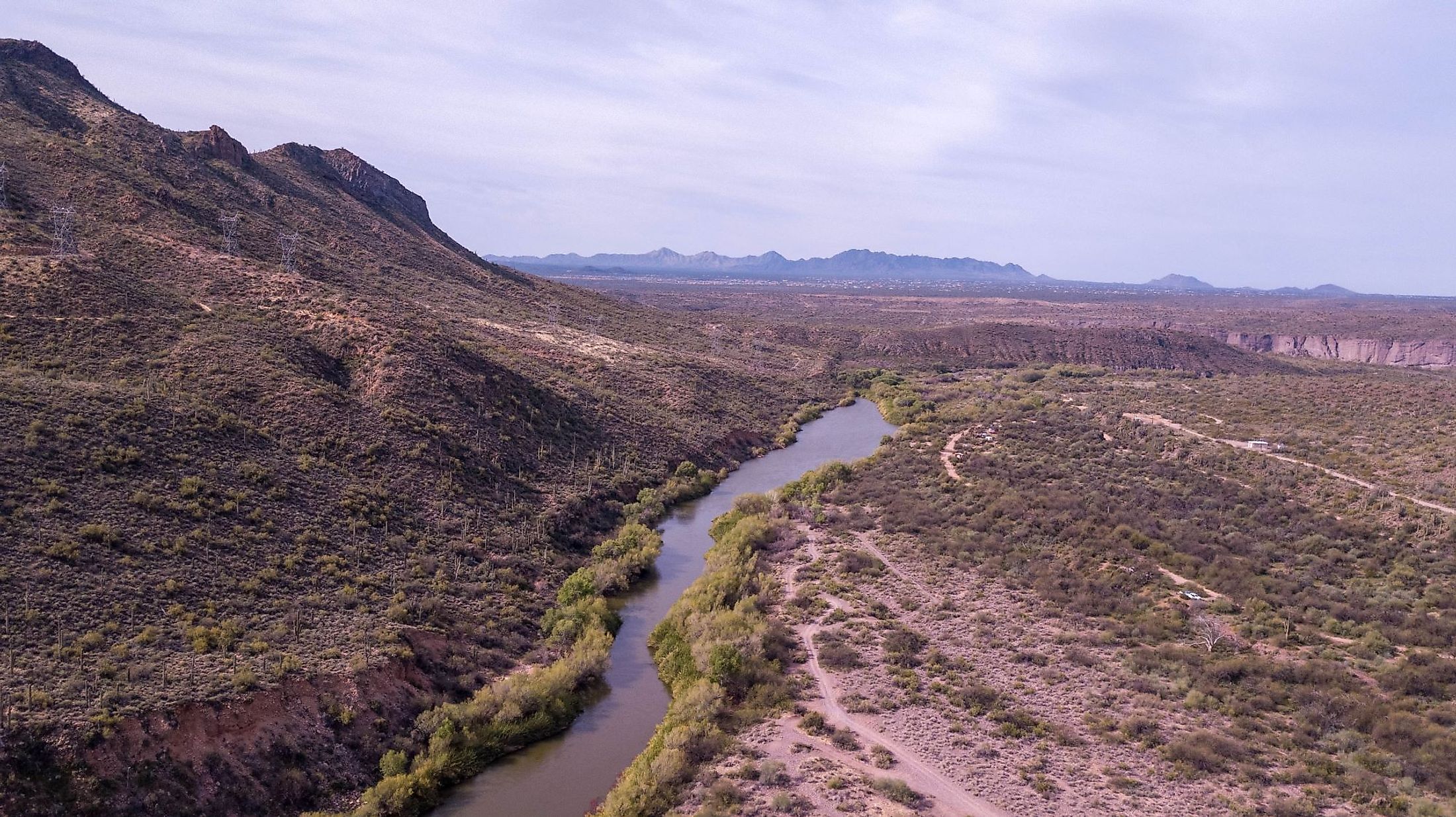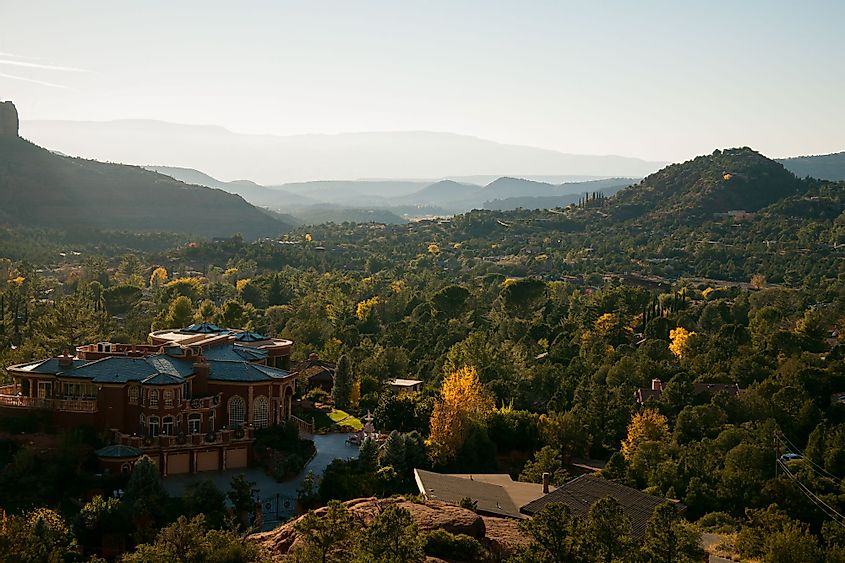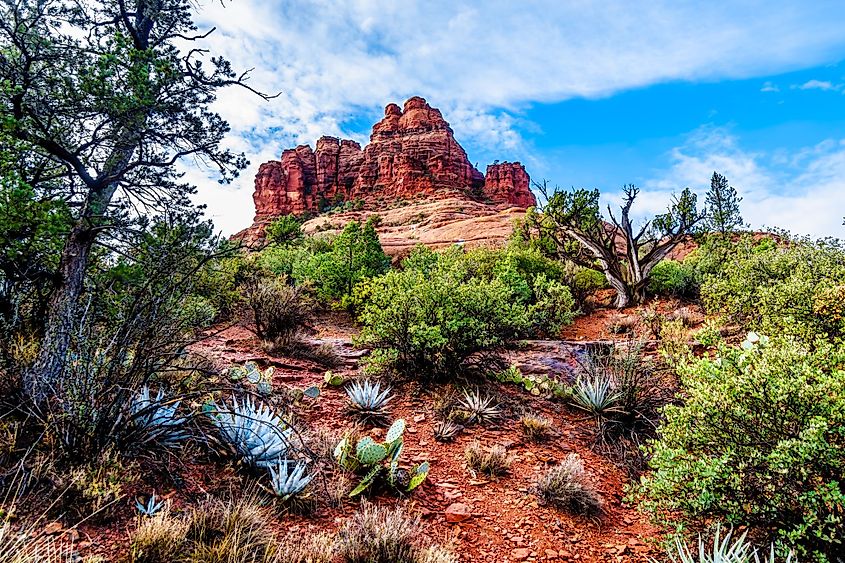
Verde Valley, Arizona
The Verde Valley is a valley that is situated in the central part of the US State of Arizona, spanning 65.2km. Located in Yavapai County, Verde Valley is around 90 miles north of Phoenix and 25 miles south of Sedona. Verde Valley is well known for its vast First Nation heritage, as well as its lush natural flora and scenic views. The area attracts steady tourism due to its historic town, national forest, and archeological sites.
Geography Of Verde Valley

Verde Valley begins from the Mingus Mountain, situated east of Prescott Valley, to the Mogollon Rim. The Valley comprises many towns and cities, including Clarkdale, Camp Verde, Lake Montezuma, Sedona, Cornville, the Village of Oak Creek, Jerome, Rimrock Cottonwood, the Verde Villages, and a large unaccounted community. The Valley's elevation ranges from 3,000 to 5,000 feet, depending on the surrounding area. The lower elevation is found in the rustic Camp Verde, while the higher elevation is seen in the thriving community of Jerome, a former mining town. Contrary to popular belief, the "high desert" is chock full of mountains, flowers, and an array of trees and bodies of water. Close to 80% of the Valley's land is National Forest. Coconino National Forest is found to the north and east of the Verde River, while Prescott National Forest is in the south and west of the river. Just under 17% of the Valley is privately owned.
Verde Valley boasts some of the mildest weather in the entire United States. Summers have an average high temperature of 99 degrees Fahrenheit and an average low temperature of 60 degrees Fahrenheit. However, the summer is where Verde Valley experiences the most precipitation. With an average annual precipitation of 12.85 inches, the summer months add up to 3.78 inches or 29.4% of the annual precipitation. In the winter, Verde Valley experiences snow for four months out of the year. The most prominent is December which makes up for 0.8 inches or 42.1% of the yearly snowfall. Snow concludes in March when only 0.2 inches are found yearly on average. December and January have the lowest temperatures, 26 degrees Fahrenheit each. Winter weather can go up to 65 degrees Fahrenheit in February, making it the warmest of the winter months.
Ecology Of Verde Valley

Verde Valley falls under an area that is protected by Dead Horse Ranch State Park. The Verde River Greenway State Natural Area consists of almost 1000 acres of riparian and upland habitats. The protected area also includes 35 miles of plant, animal, and insect life that intersect with the Verde River. Within the area are three rare plants, which have become an area of focus for protection. Verde Valley sage, Ripley wild buckwheat, and the Arizona cliff rose are the three plants which are integral to the animals in the surrounding area. Verde Valley is home to an array of animals that are seen as rare in Arizona. The American beaver is found along the river, as are a species of the river otter and the native river otter. Closer to the dry land, one can find Mountain lions and bobcats. However, some more commonly seen animals include the grey fox, coyote, jackrabbit, cottontail rabbit, and javelina. It is common to find non-native plants and animals in Verde Valley. The greenway includes species that have been introduced through unnatural means, such as a purposeful human introduction or accidental introduction. Some of these non-native species include the tree of heaven, Russian olive, puncture vine, giant reed, tumbleweed, and salt cedar.
The Population And Economy Of Verde Valley
The entire Verde Valley has a population of 69,393, which is a 3,000-person increase since 2010. Adults make up a large portion of the population, while children only make up 14% of the figure. Contrary to the rest of Arizona, the median age is 50.1 years old as opposed to the state average of 38.3. The Valley's gender split is pretty close, with females making up 51% of the population and males adding up to 49% of that figure. About 23.4% of the population have a bachelor's degree or higher, which is about 7% less than Arizona in its entirety. The median household income is $52,083, with the highest figure coming from Cornville, which is $67,848, and the lowest is Yavapai-Apache Nation at $21,042. Around 17.3% of people who live in the Valley are under the poverty line, which is about 4% higher than the state average.











